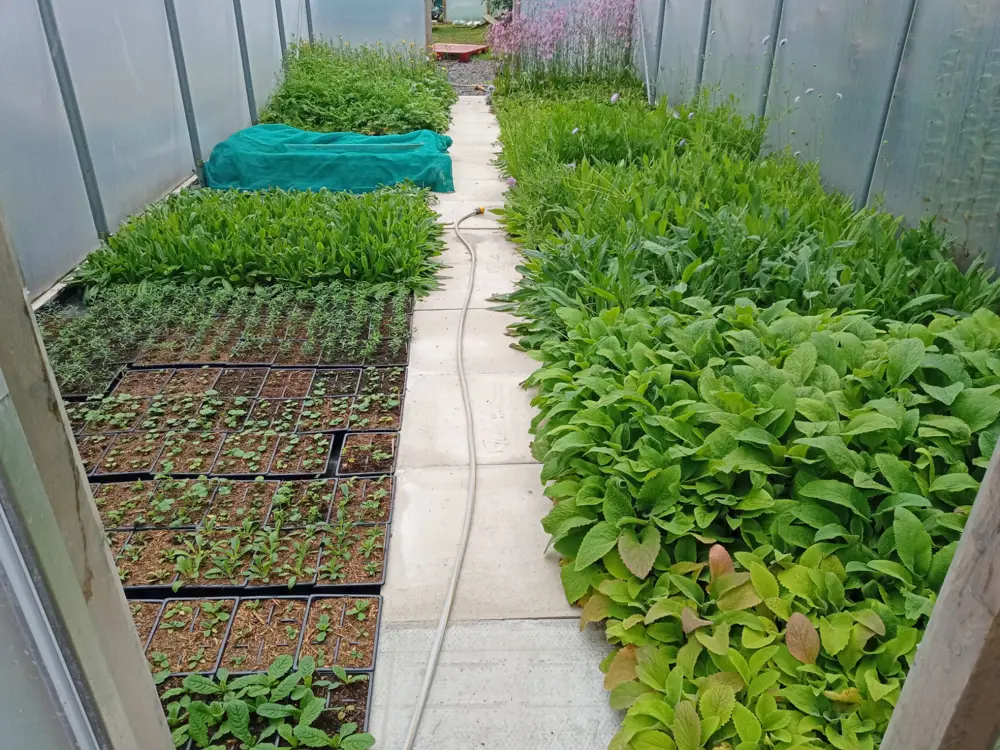Creating habitats to save rare bee

Our staff in North Region have been working all summer to grow a wide range of wildflowers that should help boost numbers of a rare species of bumblebee and other pollinating insects.
The wildflowers, being tended by staff in polytunnels in Lairg, will be planted this autumn by volunteers from the Caithness Environment Volunteer Group. The group will be planting two meadows at Sibster, that we’ve been developing as part of a larger effort to conserve the Great Yellow bumblebee.
At one time this bumblebee was recorded across the UK, however the species is now restricted to the North of Scotland in flower-rich habitats. The lack of wildflower meadows is one of the key issues around its survival.

Neil McInnes, FLS Forester for Caithness and Sutherland, said;
“It really takes a while for a healthy meadow to get going and become well established so we’ve been working on this project for several years now.
“Adjusting the mix of plants is a slow, steady process. Working with Bumblebee Conservation and local ecology volunteers and tapping into the expertise of new staff with horticultural industry experience has given us a great mix of skills and knowledge – from basic botany to plant propagation and species conservation – that are helping to shape and transform the two meadows.
“It goes to show the range of our conservation work and highlights that sometimes it’s the things that you can do at the very local level that can make all the difference in helping endangered species."
Our partners will regularly monitor the meadows in the years to come and help keep a close eye on the fortunes of these particularly rare bees.
The meadows are part of a species project within the NatureScot led Species on the Edge Programme, and are in large, open areas within a forest that was planted in 2011 on a former agricultural site.
The work started in 2014, with controlling and reducing the fast-growing rye grass and creating spaces that would allow the less vigorous, pollinator-attracting flowering plants to take root and establish.
Work continued to grow and in 2017 a hedge was planted at one of the meadows both to provide more blossom and to create a ‘bank’ and tussocky grasses, where Great Yellow Bumblebees like to nest.
Regular autumn cuts over the past few years have helped the meadows to properly mature.

Mary Legg, Secretary of the Caithness Environment Volunteers, said;
“The volunteers are happy to spend a few hours a month helping a variety of projects that allow the biodiversity of Caithness to flourish.
“In this case it's planting out wildflower plugs and, as Sibster woodland is already popular with local people, this should increase the opportunity for them to see and hear a variety of pollinating insects including the Great Yellow bumblebee. It might also encourage the visitors to allow a little space in their own gardens for wildflowers.”
Although managed to encourage pollinators generally, the addition of the volunteer-grown wildflowers will help to enrich the mix of plants such as red clover, vetches and knapweed that are the especially preferred food plants of the Great Yellow bumblebee.